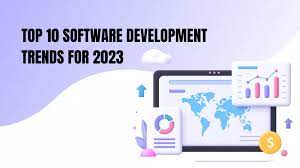Gartner, Inc. has determined the most important strategic technological developments that will affect software engineering between now and 2023 and beyond.
These findings were presented by analysts at the Gartner Application Innovation & Business Solutions Summit, which took place in London.
“Software engineering leaders are under continuous pressure to adopt modern architectures and technologies. To do this well, they need to know which trends have the greatest potential impact for their digital business efforts within an actionable planning horizon,” said Joachim Herschmann, VP Analyst at Gartner.
“Gartner’s top trends represent a set of approaches and technologies that soft-ware engineering leaders must leverage over the next two to three years to stay ahead of the curve, innovate and thrive in an environment of constant disruption.” he added.
Read also: ALX to teach software engineering to 50,000 African women
The Software trends
1. InnerSource
A software development method known as InnerSource is one that utilises open-source practises but is applied to proprietary technology.
When it comes to soft-ware development, organisations have the ability to close gaps and break down silos when they embrace an open source approach. This results in a software development lifecycle that is both more robust and more tightly wound.
According to Herschmann, the end effect of using InnerSource is the production of higher-quality software as well as improved documentation because it enables teams to generate software more quickly while also improving their ability to collaborate.
2. Developer Experience
The term “developer experience” refers to the entirety of the interactions that take place between developers and the various tools, platforms, processes, and people that they collaborate with in order to create and deliver software products and services. Enhancing the developer experience is absolutely necessary for the achievement of success with digital projects and the formation of high-performing teams.
According to Gartner, the term “developer experience” encompasses more than just “developer tools and technologies.” According to Herschmann, the tools that are utilised on a regular basis unquestionably play a role in increasing the overall quality of the developer workflows. However, the experience a developer has is also dependent on aspects that are not related to technology. These consist of having time set apart for in-depth, creative, and important work, as well as having the personal freedom to experiment with new things without the fear of failing at them.
3. AI-Augmented Software Engineering Teams
The application development process can be sped up with the help of AI-augmented software engineering, which makes use of AI technology to assist software engineering teams in their work. They are able to rapidly develop various types of artefacts, like as design elements, application code, or test cases, which they can subsequently enhance and reuse, hence speeding up the process as a whole.
According to Herschmann, AI-augmented software engineering requires not allowing technology replace software engineering teams but rather making software engineering teams’ jobs more efficient by relieving them of repetitive work.
4. AI-Empowered Applications
When enterprise data, advanced model building capabilities, and generative artificial intelligence services are combined, the end result will be data-enhanced apps that drive improved business decisions. Applications that are enabled with AI have the potential to enhance the information that is accessible within a company and its applications, automate workflows, and construct models that assess risk or recommend the next best actions.
In order to achieve their goals using artificial intelligence (AI), leaders in software engineering should approach AI model development differently from application development and coordinate the actions of teams working on both application development and model construction.
5. Platform Engineering
Platform engineering is the discipline that focuses on the construction and operation of internal self-service developer platforms for the purpose of soft-ware delivery and life cycle management. It assists developers in discovering, operating, securing, improving, and building upon complicated distributed information technology systems, particularly when the developers are not technical specialists in the systems themselves.
Platforms offer a selected collection of tools and services that collectively result in an improved experience for developers. They also increase the consistency and quality of IT solutions, cut down on redundant tools and procedures, unify parallel efforts by many teams, enforce security and compliance requirements, and include ubiquitous automation in their design.
6. Digital Immune System
In order to ensure that applications are of a high quality and have a high level of resiliency, Digital Immunity integrates best practises from the fields of observability, software testing, chaotic engineering, software development, site reliability engineering, and software supply chain security.
Herschmann pointed out that many software engineering organisations are already using some of these strategies, but none of these practises by themselves will be sufficient to achieve the goal of building highly-resilient systems. Together, however, these practises constitute a powerful continuous quality approach to ensure that complex digital systems continue to run even if the “house is on fire.”




